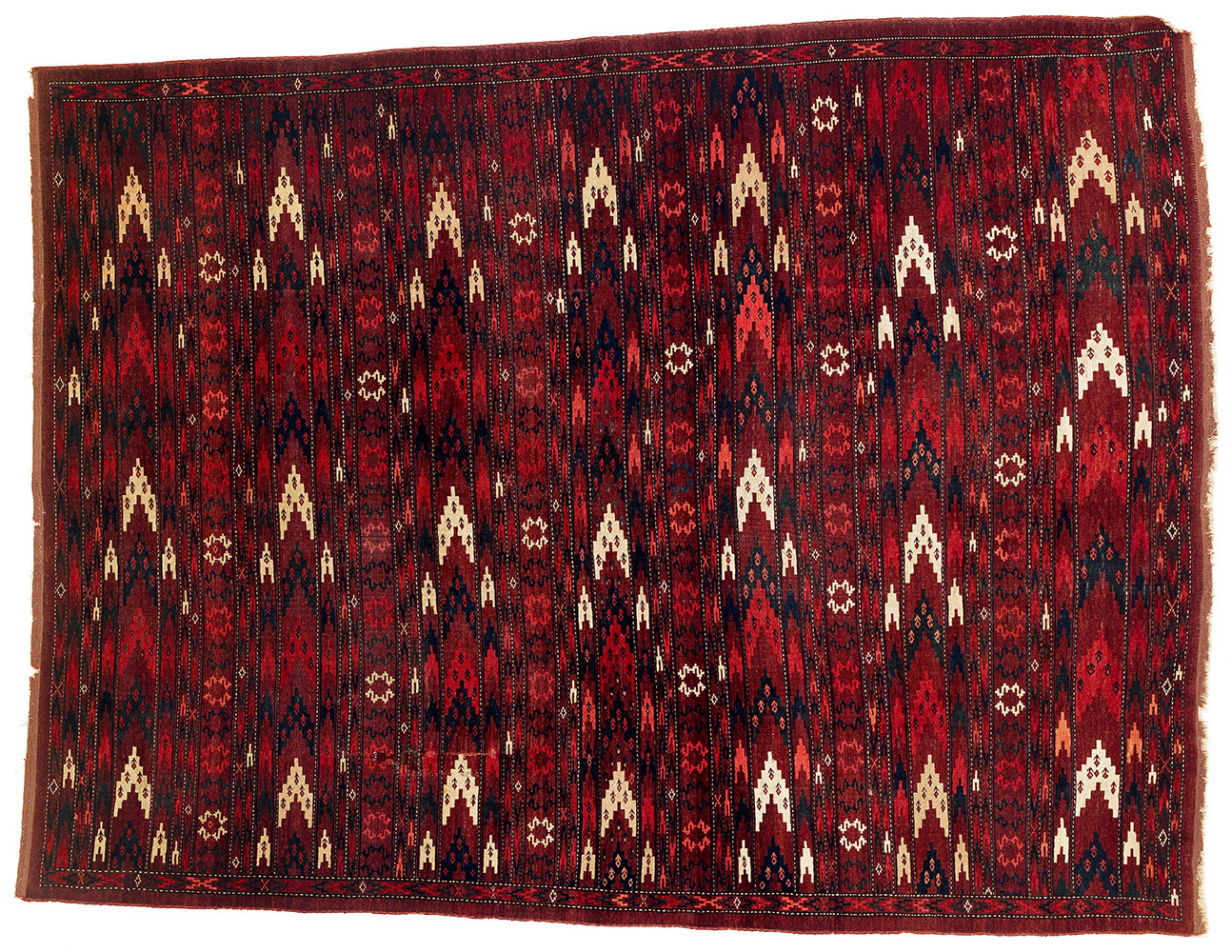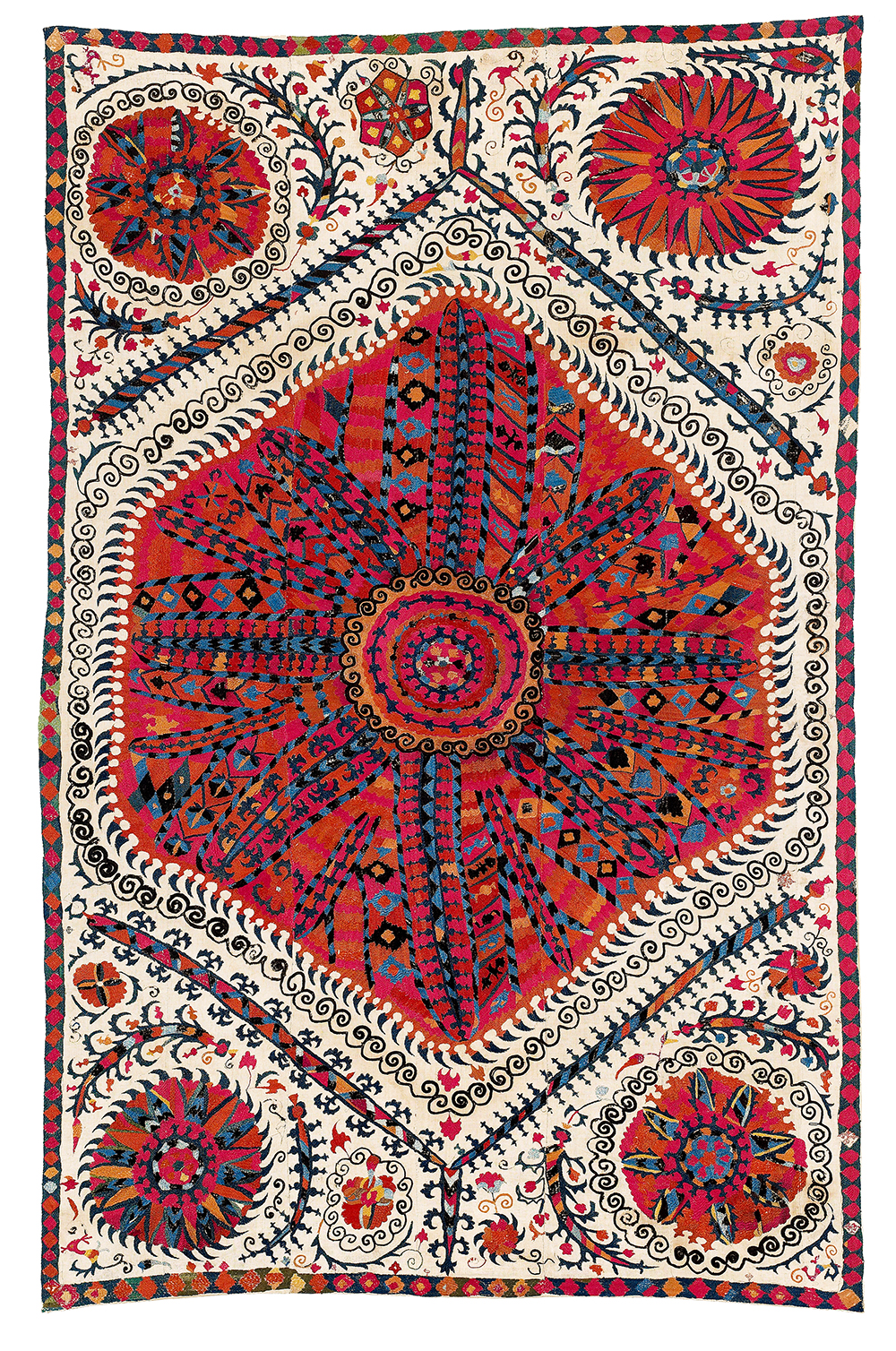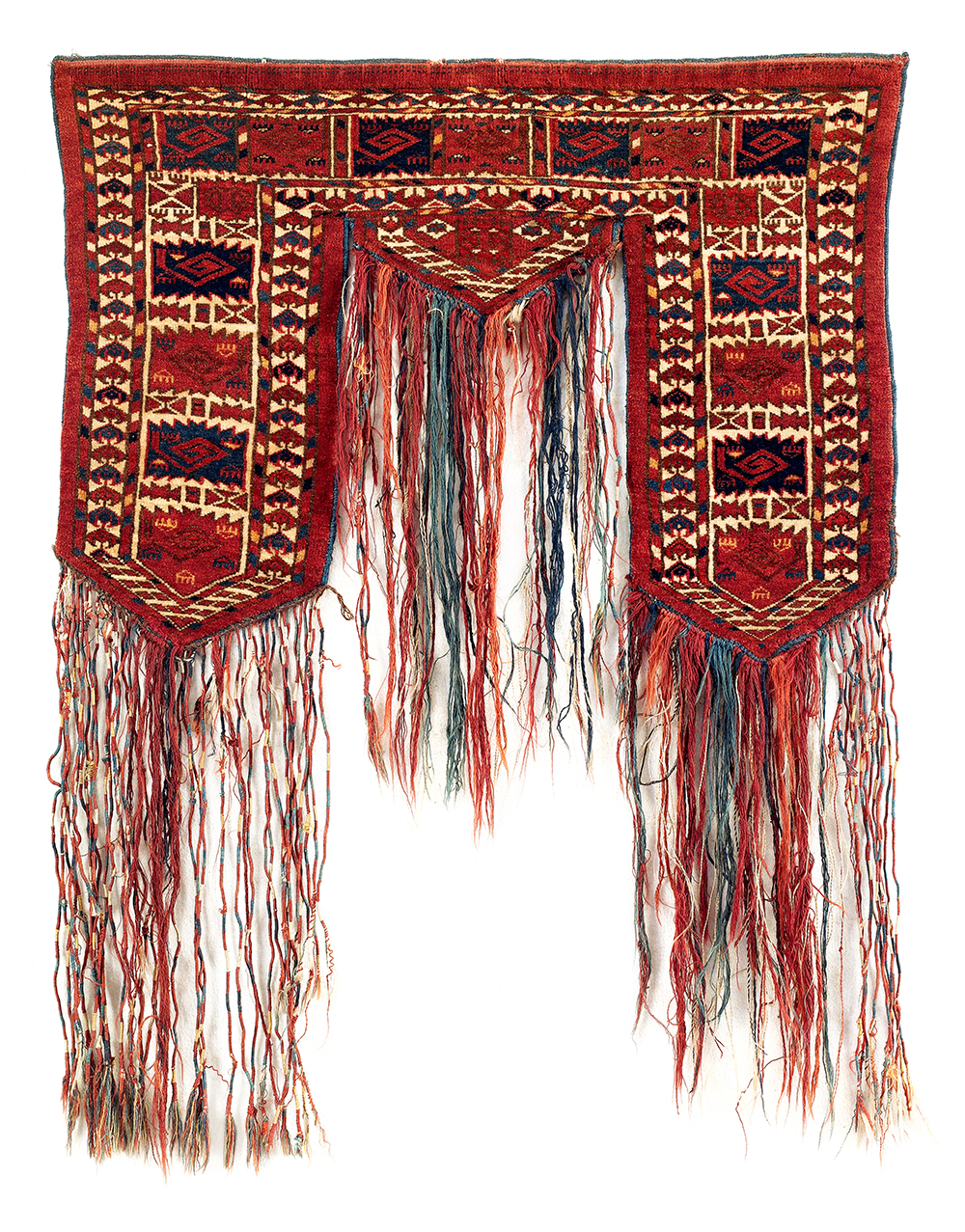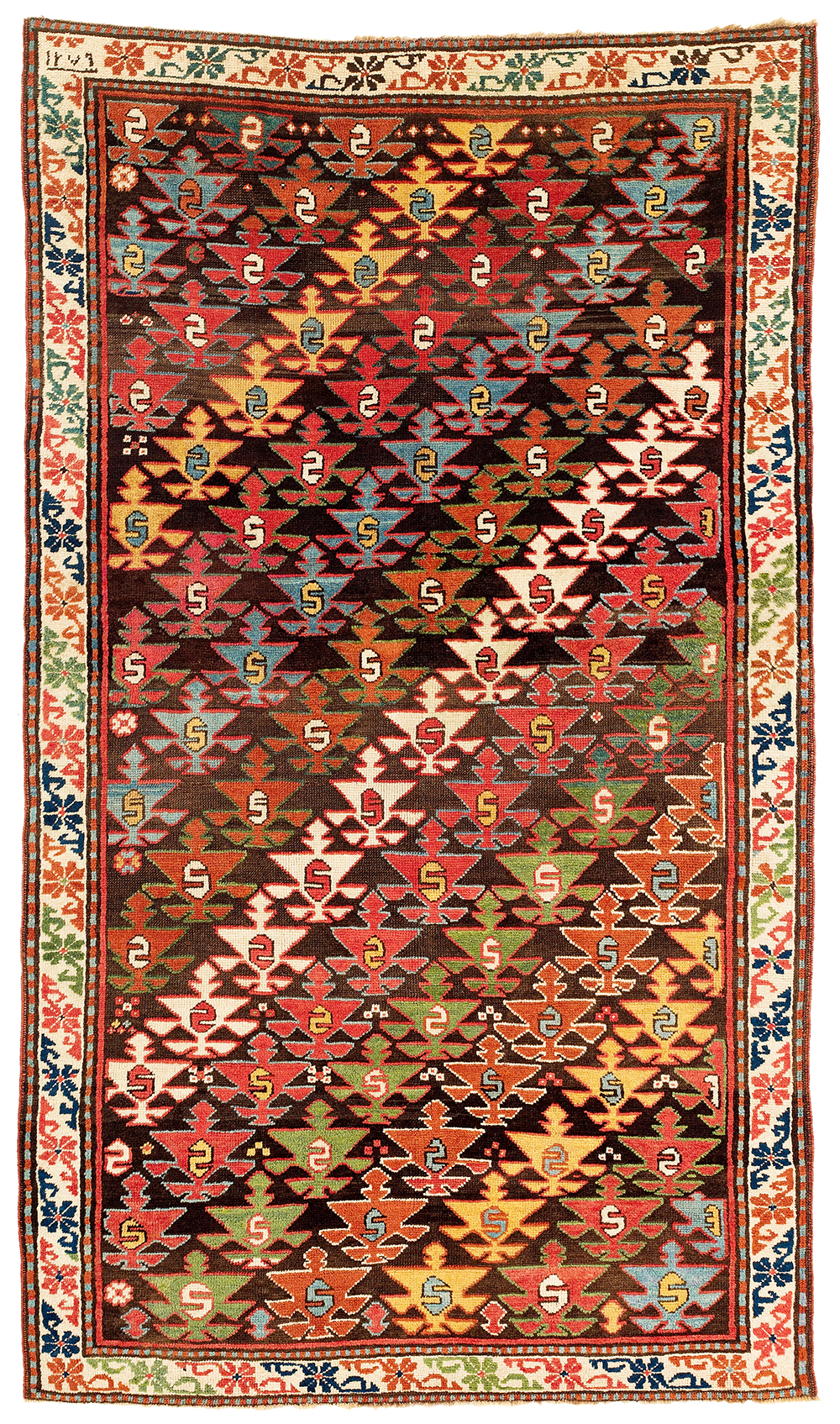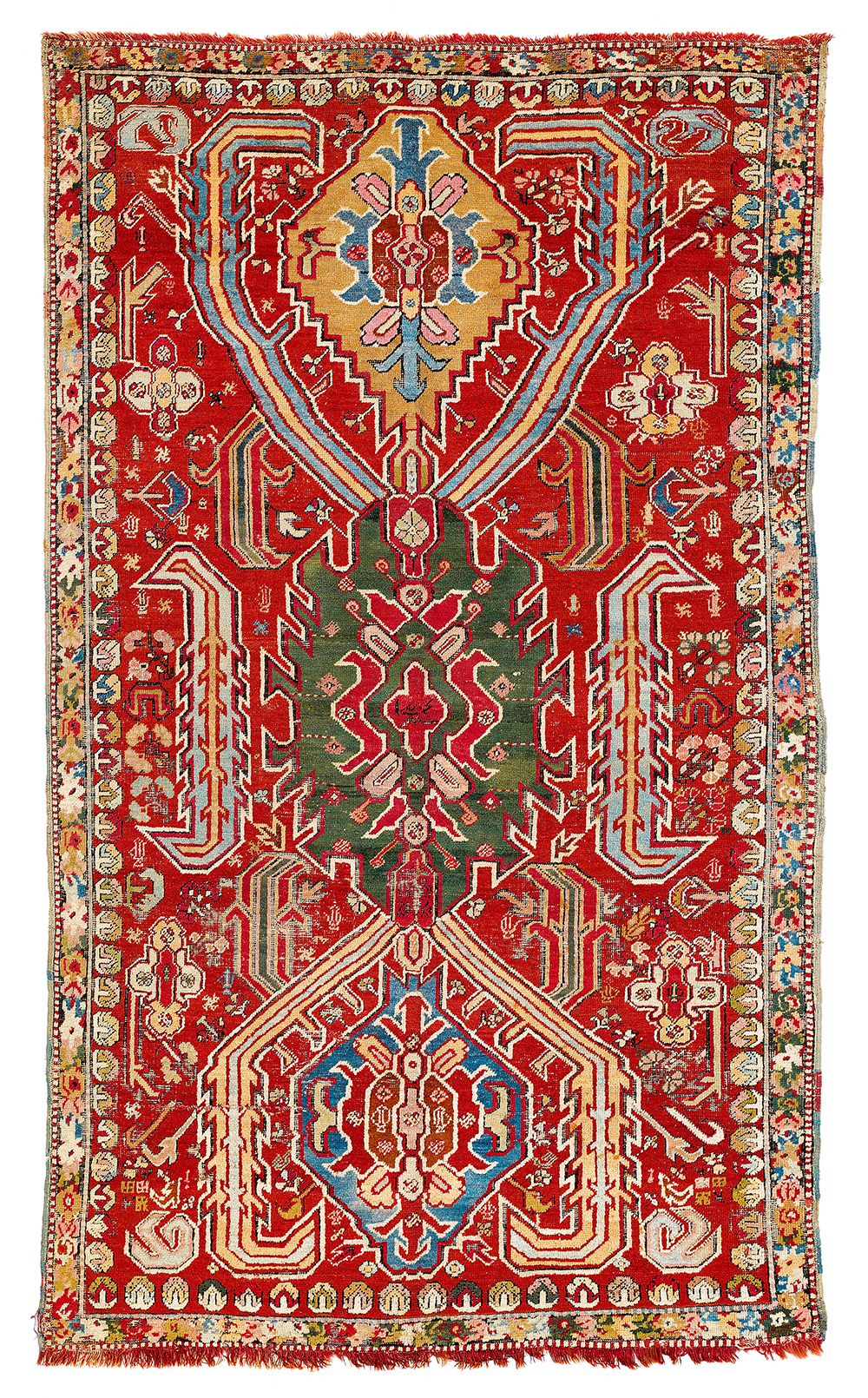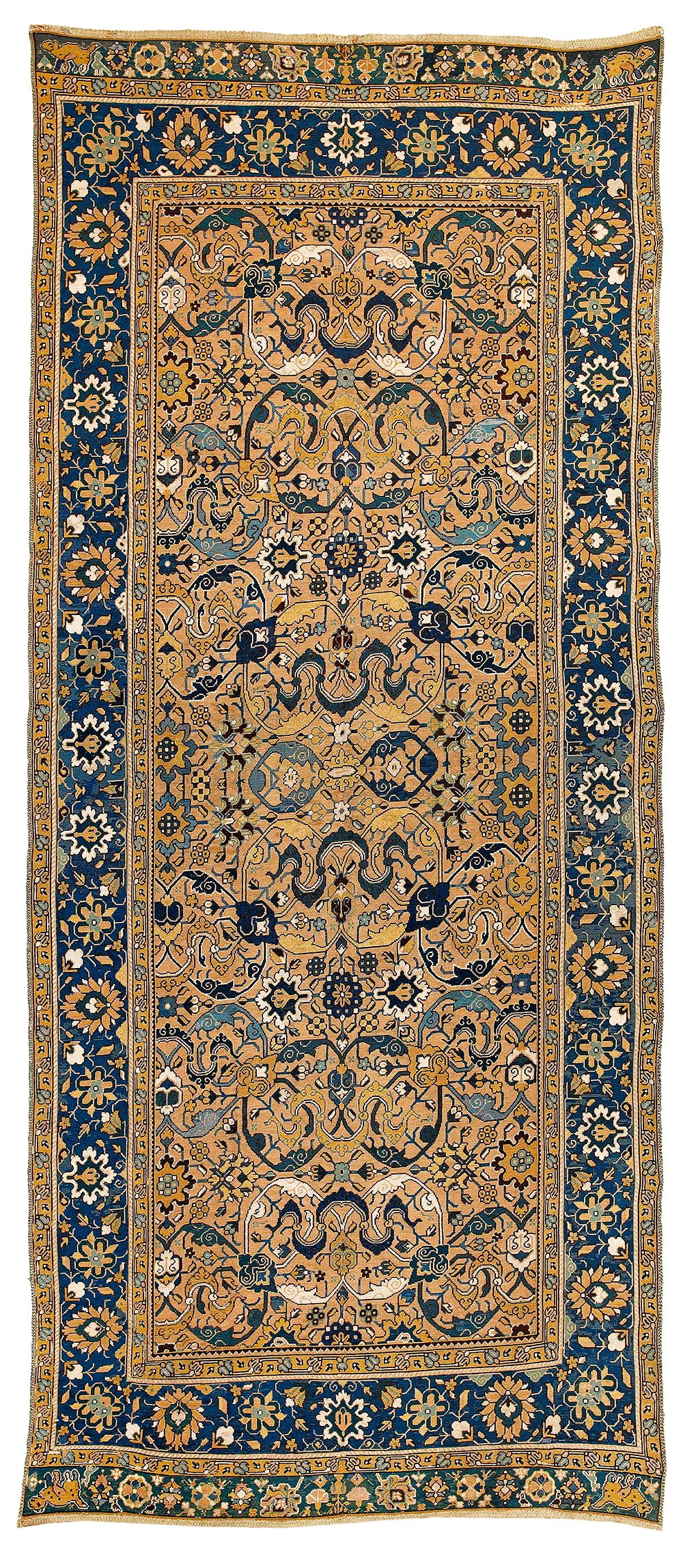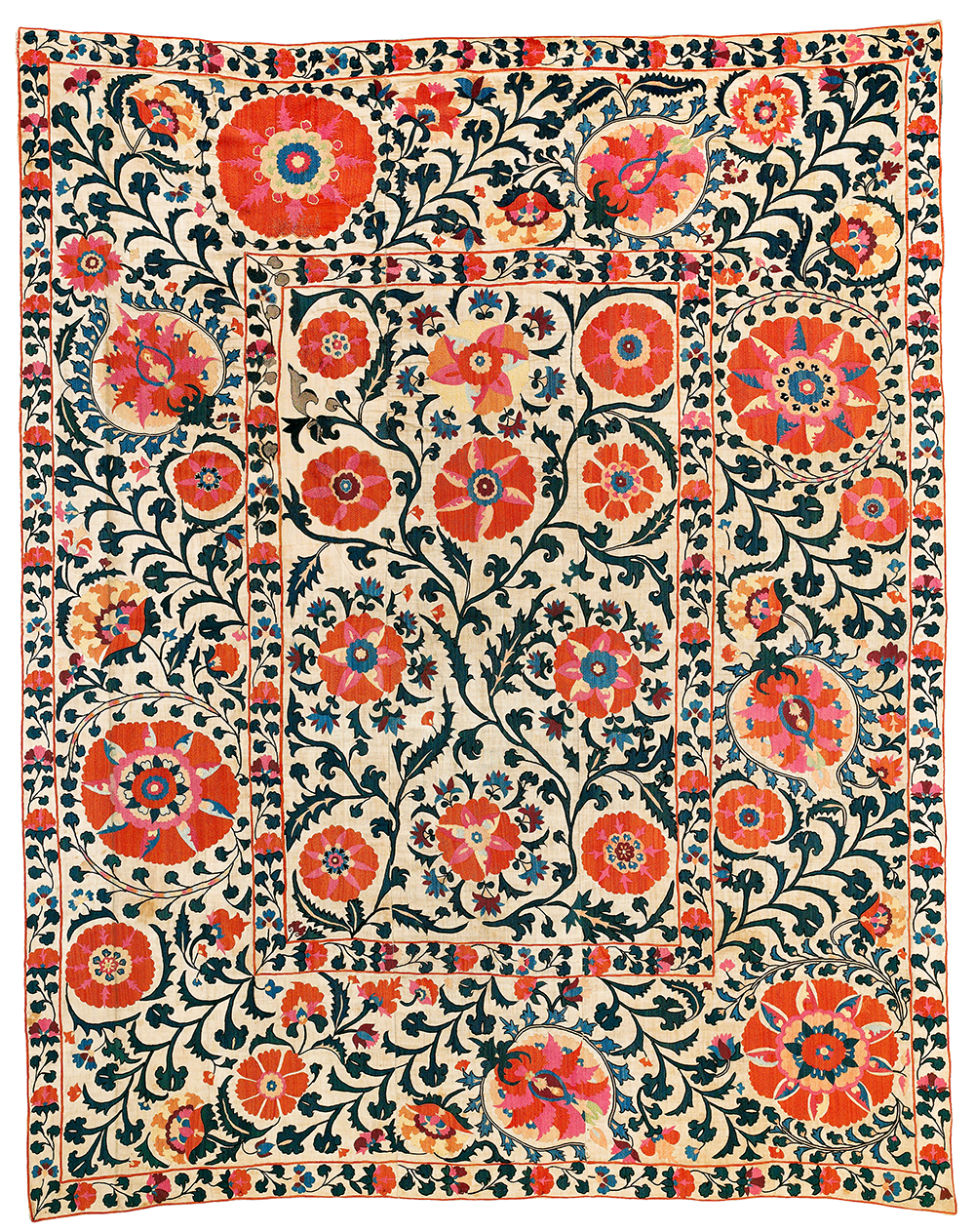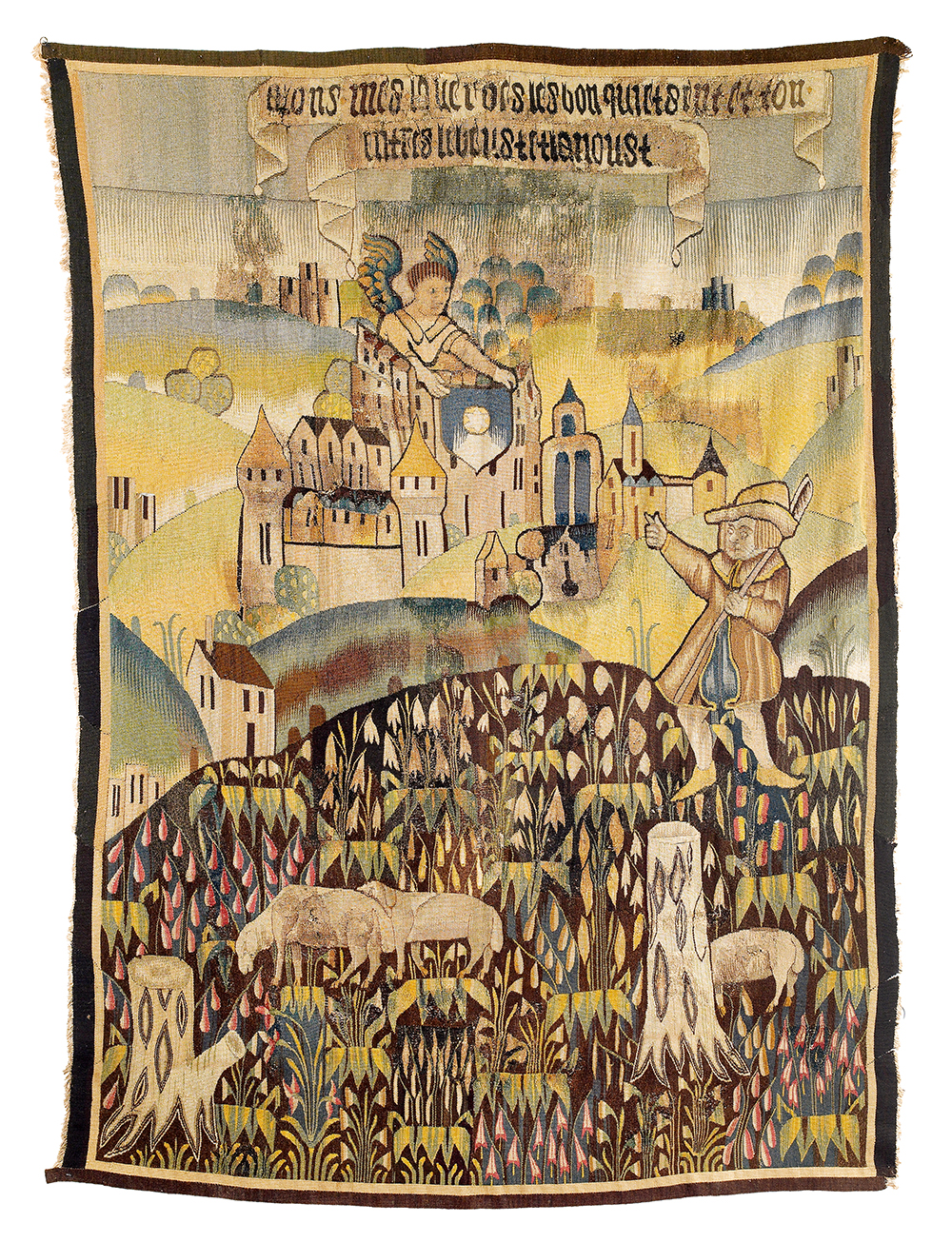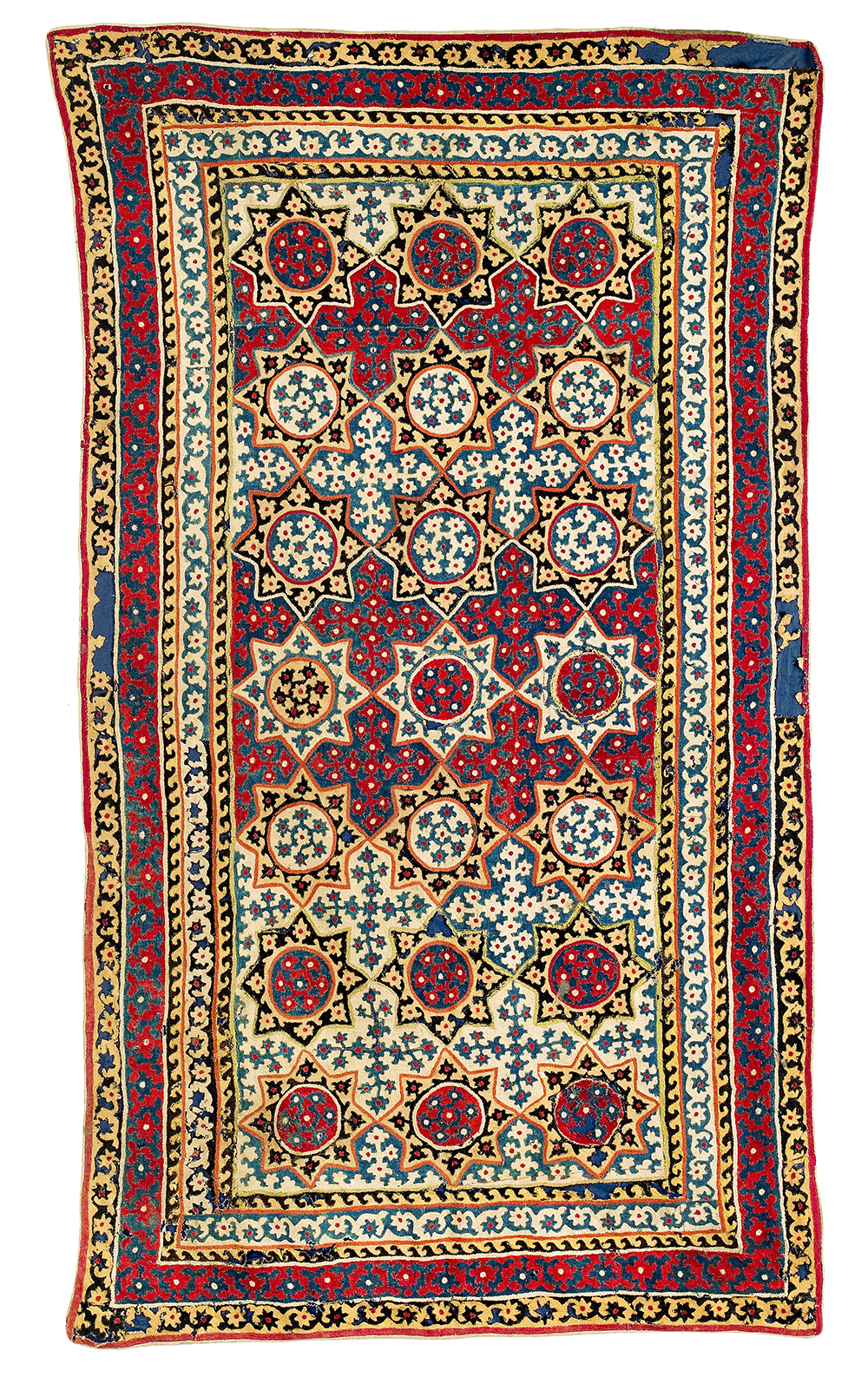The generation game at Rippon Boswell
Rippon Boswell’s Major Autumn Sale in Wiesbaden, Germany on Saturday 29th November 2014 includes more than 260 lots of selected antique carpets, rugs, flatweaves, tapestries, embroideries and other textiles, as well as rare books.
Of exceptional quality, with consignments ranging from classical oriental carpets through urban, village, tribal and nomad rugs and trappings from the length and breadth of the Eurasian ‘Rug Belt’ and beyond, to African textiles and European tapestry, the sale is also auctioneer Detlef Maltzahn’s first venture into the modern world of realtime online bidding through liveauctioneers.com.
Herr Maltzahn’s latest catalogue begins with another first, a brief but thoughtful introduction reflecting on generational change in the art market and the consequence of such change on rugs and textiles in particular. Many collections assembled over decades are now being recycled, either by ageing collectors themselves – the most efficient way – or their heirs. This often allows the next generation of collectors an opportunity to buy first class material at ‘discount’ prices compared to the sums the some older collectors paid either privately or at auction, for their treasures.
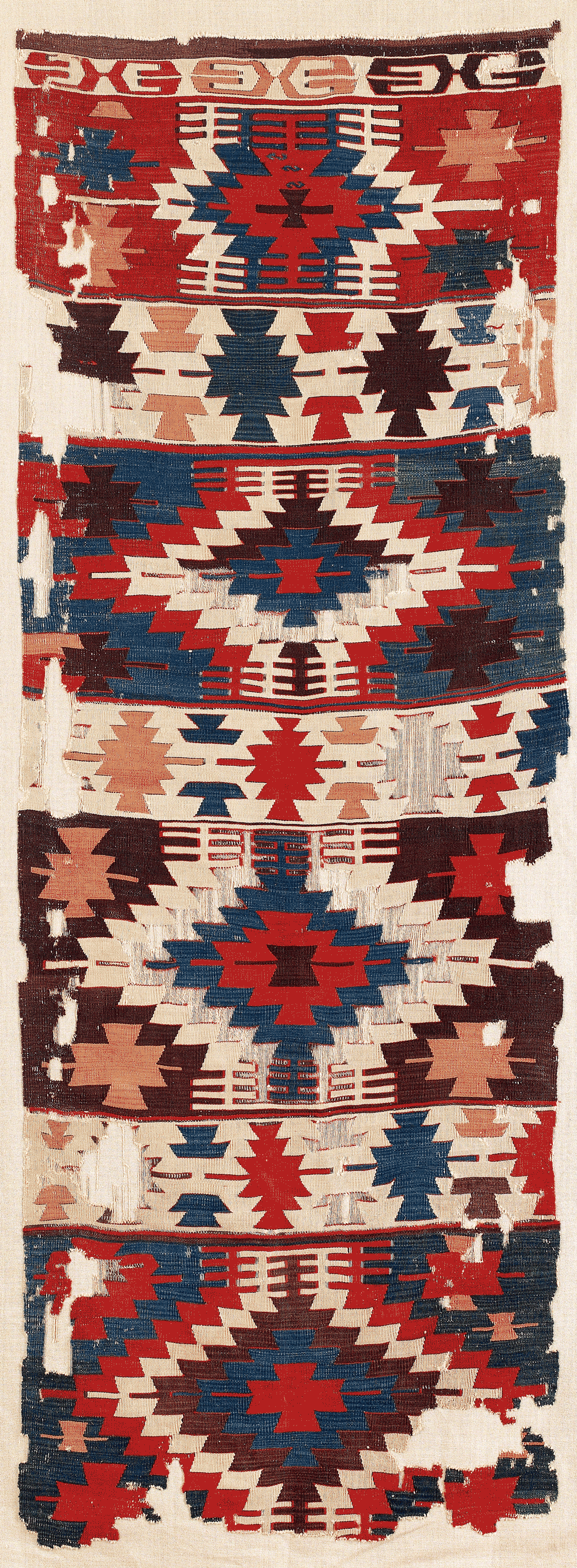
Lot 86, Karapinar kilim fragment, Konya region, Central Anatolia, 18th century, 80 x 225 cm, estimate €3,000
Generational change is very evident in this sale. Most of the fifteen Central Asian suzanis included are consigned by a UK collector who purchased them from leading textile art dealers and is now selling them for reasons of age. Similarly, the 45 lots consigned by Signora Gallo, an elderly lady from northern Italy with many years collecting experience, come at estimates intended to ensure that all her carpets and textiles will find new owners. Most of the Anatolian kilims are from two private collections: a German industrialist who was deeply involved with kilims for thirty years, but whose children have other interests; and a Swiss architect who fell in love with Anatolian kilims while living and working in the Islamic world for the Aga Khan Foundation.
The sale, as always, includes some rare and valuable Turkmen rugs. The highlight is an Eagle Group I carpet with a chevron stripe design consigned by a US collector. There are also several European pieces. Five beautiful tapestry cushion covers from the late Renaissance period were woven in north German workshops run by Dutch emigrants. Their UK consignor purchased them from C. John in London many years ago. In addition there are two modern French weavings after designs by great modern artists. Le Tarasque, a tapestry by Jean Lurçat, was woven at Aubusson around 1950, while Pablo Picasso’s Le Vase was made in knotted pile for Marie Cutolli’s Paris studio in 1960.

Lot: 96 Cushion face Lot 96, Tapestry cushion face, Northern Germany, Hamburg, 17th century, 53 x 50 cm, estimate €1,800


